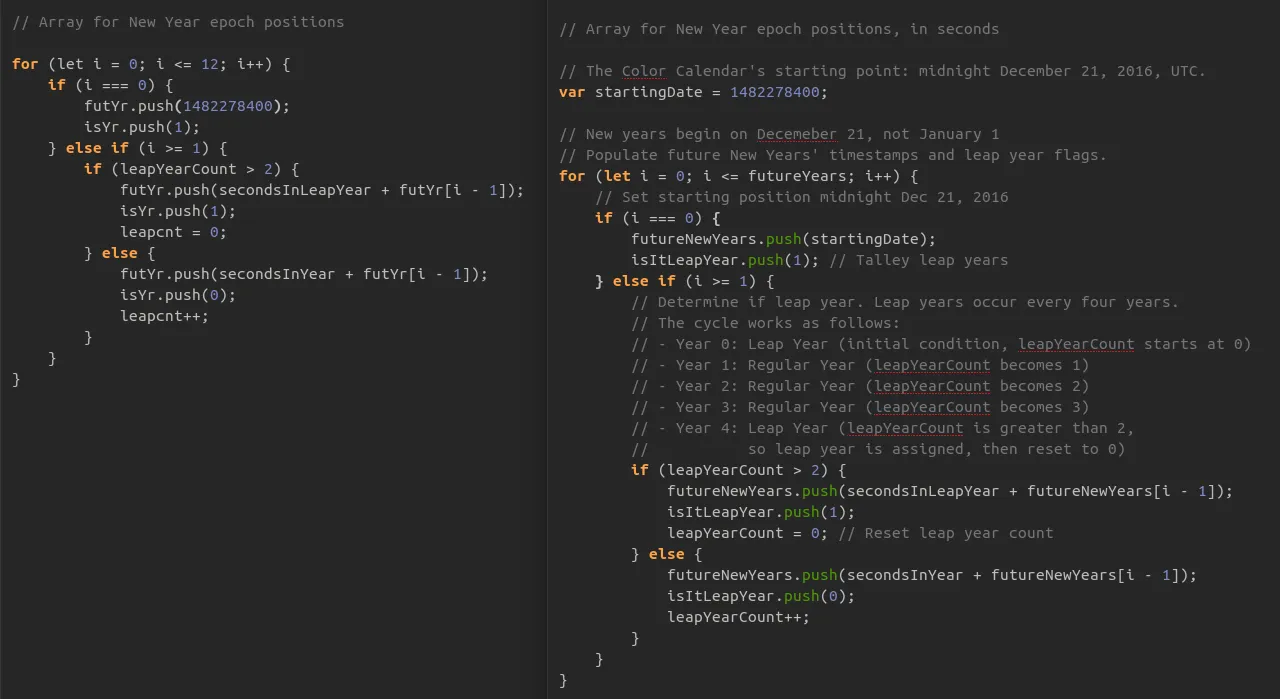Pedagogic Code is a proposal to make code not only functional and but also highly instructive and easily understandable, especially for non programmers. Pedagogic Code is any scenario where the goal is not just to run the code, but understand, learn from, or teach with it. This standard will act as a bridge between the complex realm of programming and individuals unfamiliar with its intricacies. By including comprehensive comments, meaningful naming conventions, prioritization of clarity over brevity, and a logical step-by-step approach to code structure, all aimed at maximizing transparency for the general public.

The main objective is to enhance code transparency, preventing any hidden code from performing harmful actions. Individuals interested in understanding software logic can easily review the code. It should follow consistent naming conventions for IDs and classes across various programming languages, ensuring clarity and a mandatory date of the last update, to maintain ongoing transparency and accountability.
In numerous instances, the client-side code of various platforms is open, while the server-side code remains undisclosed. Even if a platform were to release its server-side code, there's no assurance that they are genuinely utilizing it in the background. A viable solution would be a third-party, non-profit audit system, where selected non-profit organizations would perform code audits and issue regular reports to the public, guaranteeing transparency and responsibility.
When designing a new alphabet, it raises questions about its integration into computer code. While natural language coding exists, incorporating Boolean algebra into the letters themselves presents a unique challenge. Expressions like "If," "And," and "Or" could potentially be represented as icons or single logographic symbols, but the process of implementing this integration requires careful consideration and exploration.
Time Complexity Time complexity is a measure of the performance of an algorithm in terms of the time it takes to complete, given the input size, rather than measuring time in seconds. Different algorithms have different time complexities for the same problem. Improving time complexity involves choosing the right algorithm, optimizing the algorithm, using efficient data structures, parallelizing the algorithm, and reducing the input size. By carefully considering these factors, you can significantly improve the performance of an algorithm and reduce the time it takes to process a given input.
In exploring the creation of a new alphabet, it's an intriguing concept to consider having the letters symbolize popular algorithms, encapsulating functions within single logographic symbols. Currently, most programming languages exclusively use Latin letters. However, in the development of a new alphabet, it would be advantageous to preemptively anticipate and encompass various facets of computer science to enhance its utility and flexibility. This would not only make the new alphabet more versatile but also facilitate the representation of complex functions in a more compact and intuitive manner.